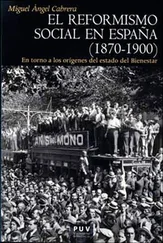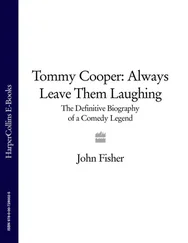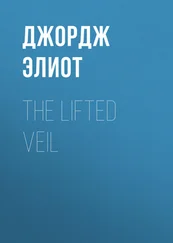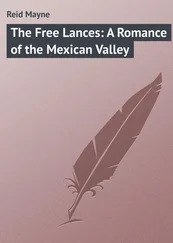“Home Literature” can be still used as a label today. It is a term that gathers those literary works that are directed at a particular target audience and that deal with specific topics concerning that audience. However, it is unhelpful to make strict distinctions between genres at a time when they are often transgressed and labels trespassed. Still, there was a public to welcome these books when they were being written at the turn of the 19 thcentury, and there is a public now; an audience ready to consume what the books which this label gathers try to express to their potential readers.
A third period can be discerned as spanning only a few years in the middle of the 20 thcentury—a short period of time in which a valuable group of writers wrote some of the most interesting books in Mormon literary history. Importantly, they were able to publish nationally. This first group from the 1930s and 1940s reacted against the provinciality and didacticism of the so-called “Home Literature” period, but, because they were rejected by many Mormons and published their books outside of Utah, Edward Geary called them the “Lost Generation” (Geary, Mormondom ’s 98). The main figure of this period is Vardis Fisher, whose novel Children of God: An American Epic (1939) is considered by Wallace Stegner to be one of the best novels in the history of Mormon literature ( Stegner 114). Fisher, winner of a Harper Prize, received mixed reviews for this book: “he had many letters from ‘the righteous’ condemning him for being anti-Mormon” (Arrington, Heritage 44) but, at the same time, “most critics found him definitely pro-Mormon” (Arrington, Heritage 44). The novel establishes two clear dimensions which are intertwined and which interact with tension: a general, historic dimension and a much smaller dimension—that of the specific problems faced by individuals. The truth is that this novel remains one of the most highly regarded of all Mormon novels.
Fisher aside, it also seems mandatory to underline the work of other writers of this period such as Maurine Whipple and Virginia Sorensen. Maurine Whipple also chose the pioneering days for the setting of her novel The Giant Joshua (1941), a novel that is still praised and recognized, and not only within a Mormon realm. By contrast, Virginia Sorensen represents another side of this complex group. She belongs to that group of writers who, rather than contextualizing their stories within the frame offered by the pioneering days, tended to delve into the tribulations of a provincial Mormonism that tried to transcend the days of the settling of the American West (Geary, Mormondom’s 89-100). In this group, Virginia Sorensen is probably the most visible figure, but some others will be mentioned later. Many of her novels, from A Little Lower than Angels (1942) to The Evening and the Morning (1949) are rated as the best examples of Mormon literature dealing with the 1920s. These three writers were not the only worthy representatives of this particular era. Others, such as Paul Bailey and his book For This My Glory (1940), Richard Scowscroft’s Children of Covenant (1945), Samuel W. Taylor’s Heaven Knows Why (1948) and Ardeth Kennelly’s The Peaceable Kingdom (1949), help to favor the idea that this was a period of writing in which Mormonism showed the first outpouring of literature which was able to transcend the tastes and interests of an orthodox Mormon audience.
In general, this first reaction against the previous attention to didacticism heralds the future division of Mormon literature and criticism: the division between those who claim for a Mormon literature that deals mostly with Mormon themes and that is written for a Mormon reader, and those who encourage a literature that incorporates disruptive topics. This division exists in Mormon culture as such—not just in literary criticism—and it seems to stem from a tradition that encompasses these last two periods. However, the next step in the history of Mormon literature tilts towards a promising balance that signals a tidy but risky path ahead.
The fourth period extends to the present day and contains a general survey of contemporary Mormon literature and criticism, with special emphasis on the new perspectives introduced by the most recent Mormon writers. This generation obviously overlaps with the previous generation, which continued producing works of literature. The second half of the 20 thcentury is too long and complex a period for which to advocate definite labels. In fact, there is here a dual tendency that makes the contemporary landscape even more complex. On the one hand, it is obvious to the eye of this scholar that some traditional tenets are still followed with zeal and determination. Writers that are in debt to the so-called “Home Literature” tradition keep trying to develop a high-quality literature that deals with topics that only appeal to Mormons. In contrast to this, there are a great number of writers whose point of view and interests seem to resemble the books published by the authors that blossomed during the so-called “Lost Generation” era. Nevertheless, there is also a tendency to merge these two inclinations in one. There are a considerable number of Mormon writers who have been able to blur the borders between these two customary tendencies. Besides, contemporary writers often threaten to subvert the gap between literature and religion. Some Mormon writers are including religious aspects in genres that usually remained unaware of the potential dividend that faith could offer to fiction. Others are developing topics that go beyond what some orthodox Mormons expect from literature, looking rather inappropriate for their contents or styles. In conclusion, it seems quite brute and daredevil to try to summarize the second half of the 20 thcentury and the first years of the 21 stwith definite conclusions offering a perfect frame or specific category to fit everything into. Contemporary Mormon fiction and poetry seems to accept the challenge of blurring any line that appears to establish distinctions between genres, motifs and moral stipulation. As in any other body of literature, there are writers who could be associated with certain genres and even those who purposely address a specific audience with a specific agenda, but it is also true and indeed necessary to point out that there is a growing number of Mormon writers who have been contributing to the task of ending these dichotomies.
As I stated above, during the second half of the 20 thcentury, some writers have kept on writing and improving the so-called “Home Literature” tradition. What researchers still call “Home Literature” was sourced in the specific historical situation that made it so belligerent, but today there are still many novels stressing their Mormon elements over any other literary aspects. It is evident that writers such as Shirley Sealy, Jack Weyland and Gerald Lund are popular writers who enjoy the acceptance of a wider orthodox readership that looks for a specific set of attributes. In contemporary writing the sales of this popular fiction has increased notably. The improvement in the sales and the growing popularity of these traditional novels started in the 1990s when Gerald Lund released his first work in the series The Work and the Glory , the chronicles of the fictional Steed family. Subsequent releases were very successful and other Latter-day Saints fiction series like Chris Hemerdinger’s Tennis Shoes Among the Nephities (1989-2012) contributed to the rising popularity of Mormon popular fiction. Other writers, such as Anita Stanfield and Rachel Ann Nunes in romance novels, or Dean Hughes in historical fiction, and children’s books—also worth mentioning the work by Richard Paul Evans, even though he also writes in other genres—could be included here because their books have achieved popularity mainly within Mormon readership.
Читать дальше












